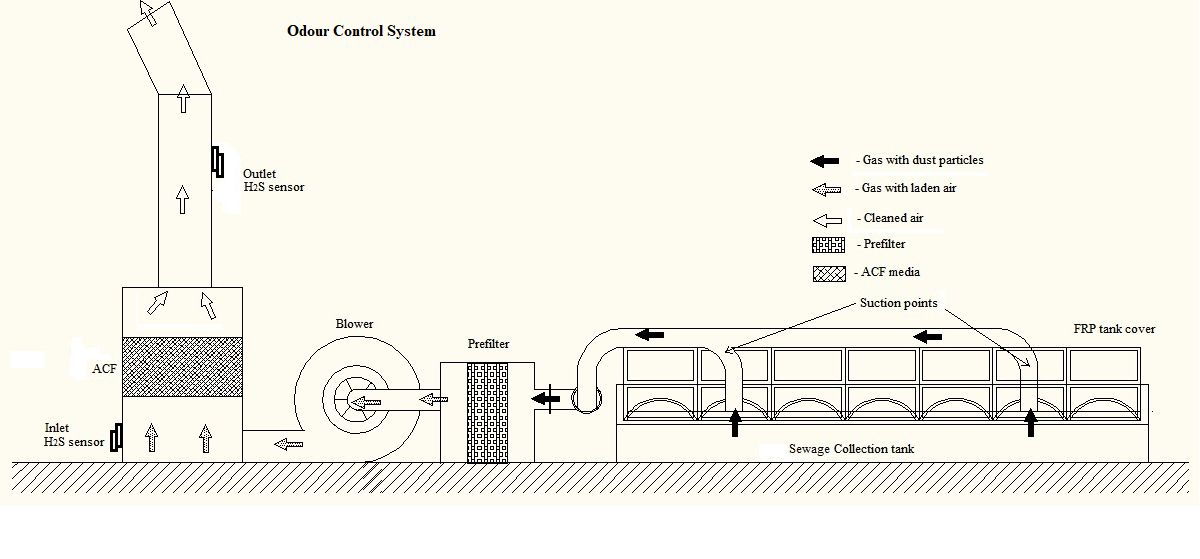
Breathing clean air is essential for human well-being, yet odour nuisance remains a persistent issue in wastewater treatment facilities. These facilities emit hazardous gases such as methane, ammonia, and hydrogen sulphide (H₂S), which pose severe health risks, including suffocation, loss of consciousness, and even death at high concentrations. Furthermore, odourous outflows can lead to legitimate and regulatory challenges when wastewater treatment plants are found in close proximity to residential zones. To address these concerns, this study is proposed to investigate the effectiveness of Activated Carbon Filtered (ACF) Odour Control System (OCS) in reducing H2S concentrations employing a coal-based grasp sulphone carbon media filter. H₂S values measured over three months showed up to 20 ppm, daily midpoints of 6–10 ppm, and weekly midpoints of 5–8 ppm. IoT-based remote sensing processes were used to assess real-time concentrations of hazardous gases. The utilization of the ACF - OCS viably diminished H₂S radiations to approximately zero ppm, outlining its reasonability. Scanning Electron Microscopy (SEM) examination asserted the adsorption of H₂S by enlightening structural changes in the activated carbon, though X-ray Diffraction (XRD) examination appeared minor changes to its indistinct structure due to interactions with adsorbed compounds. The results validate the efficiency of the ACF system in directing odour emissions, improving air quality, and diminishing corrosion risks in wastewater treatment environments.
Total file downloads: 16